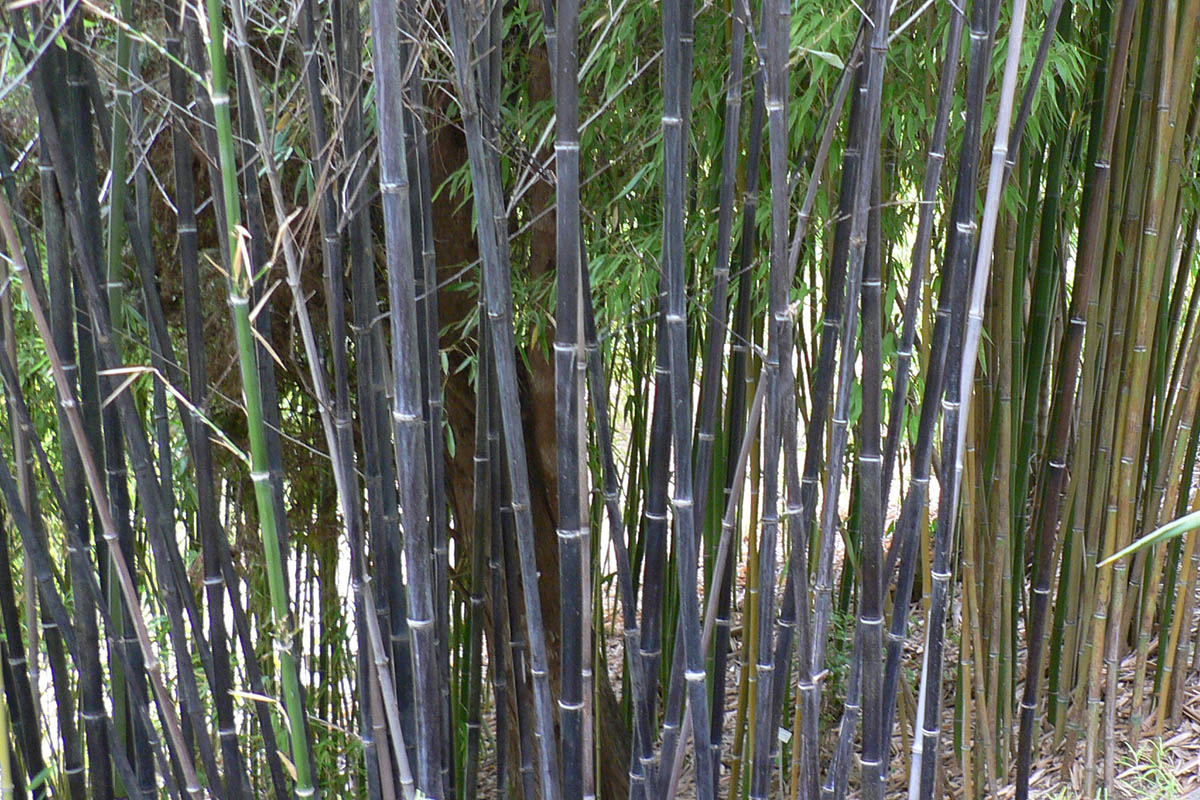Phyllostachys Nigra Nigra attractive plant has a unique name that is Black bamboo. It is one of the species of bamboo. It was the first time discovered in the Province of China Hunan afterward it was grown widely elsewhere. Phyllostachys nigra is taken as one of the most beautiful and beneficial bamboos. This plant is ideal for those who want to decorate their gardens due to their eye-catchy un rare black jet culms. In addition to this, in every spring new culms emerge that are green but over time they turn into black approximately in three years. In this way, a beautiful combination of green and black culms is created together with the help of its slender, bright leaves. There are numerous ways to use this plant to style different gardens, landscapes, etc. But firstly, it is perfect for gardens.
Common names:
The others for this plant are timber bamboo, black bamboo, and bamboo.
Scientific name:
Phyllostachys nigra is its scientific name.
Family: Poaceae is the family of black bamboo.
Genus: Phyllostachys
Species: P. nigra
Hardiness zone: The USDA hardiness zone of Phyllostachys nigra is 7-10.
Height: Black bamboo is one of those plants that grow every year. It can grow up to 20-35 feet.
Origin: Black bamboo was first time discovered in Southern China.
Regions Where Black Bamboo Is Naturalized:
Black bamboo is naturalized in New Zealand, Reunion, Australia, and Hawaii.
Soil Needs: The soil that is preferred by the black bamboo plant must be loamy and moist. Along with this, it must have a highly acidic to little alkaline pH. In addition to this, if there is a lack of acids in the soil then you need to enhance the soil that fulfils all these requirements. Significantly, in this way, the garden will get fast-growing results from this tree.
Sunlight Needs: Interestingly, this plant doesn’t demand any specific sunlight amount. And it can be grown in any location whether it receives full sunlight or partial shades.
Watering: If Black bamboo is facilitated with 1-inch water every week, whether from yearly watering or due to rainfall. It is significant to provide water to its roots deeply. Due to which you will prevent the bamboo from drought.
Fertilizer: For the healthy growth of this tree, it is perfect to fertilize black bamboo for providing it with extra nutrients. The best fertilizer is that contains nitrogen for good development. You can fertilize black bamboo at the end of the spring and in the mid of its developing time.
Harvesting: The best way to harvest black bamboo is, start with little sprouts, and wait till they get a few inches in height. And it is good to harvest bamboo plant when it gets approximately 6 inches.
Pruning: Bamboo is considered a rapidly growing plant. For the maintenance of Phyllostachys nigra prune it occasionally. The best time for pruning is spring.
Medical Uses:
- The leaves of Phyllostachys nigra are diuretic and antipyretic. And are beneficial to cure nose bleeding, fever and vomiting.
- Significantly, the juicy that it secreted from its stems is antitussive, sedative, antipyretic and expectorant.
- Black bamboo is also used for the treatment of lung diseases and cough.
- The stem bark epidermis is sedative, antiemetic and depurative.
- Roots of bamboo are styptic, astringent and diuretic. And are best for the treatment of rabies.
Conclusion:
So in a nutshell, black bamboo is not easy to grow a plant. But also helps you to decorate or enhance the beauty of your gardens as well as landscapes. It has a wide range of medical benefits due to which it is widely grown in various regions of the world. So it is not bad to add black bamboo to your garden. Along with just one plant, you can have benefits, and beauty together.

